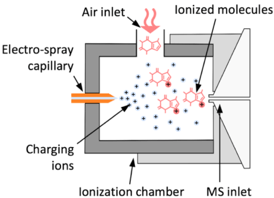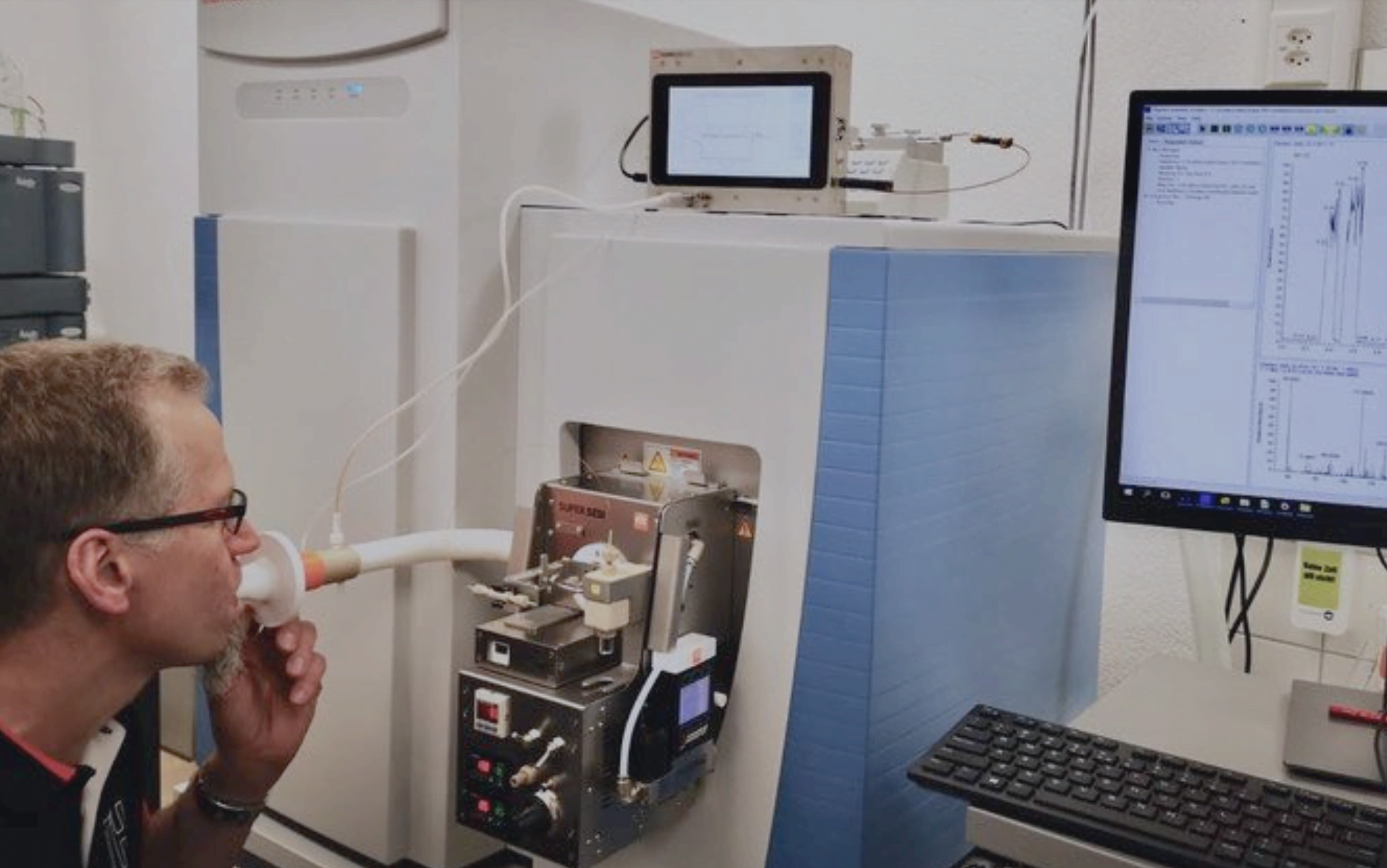The two diagnostic methods shown below – Retinal Micro Blood-Vessel Analysis and Chemical Breath Analysis – are unique in their sensitivity and early disease detection capability; these translate directly into better treatment options – and often also in the prevention of the disease altogether. The two methods allow fast and accurate patient data collection and are well suited for screening of large numbers of people. Patients in risk groups can thus be tested frequently, and even slight changes in the condition can be quickly detected. In order to improve the accuracy and specificity of the two methods, an enlarged data base of correlated patient samples is required; to this end, we will invite suitable Chinese medical research institutions to work with us in systematically building up this data base.
Breath analysis is the development of core technologies and methodologies for the safe, sensitive, fast and inexpensive analysis of exhaled breath. Breath analysis is a highly promising diagnostic tool that allows rapid monitoring of biochemical parameters in real time and in a non-invasive way. It therefore has the potential to simplify diagnosis and monitoring of various diseases, and may at some point replace analyses that are currently performed on blood or urine samples.
Sample preparation for diagnostic purposes directly from the lung may be difficult. But exhaled breath is a unique window to the internal metabolism of the body, which can be analyzed with very high sensitivity and selectivity. Mass spectrometry allows the highest accuracy for the determination of chemical compounds with very little sample consumption. In the 1970s, Linus Pauling´s study of exhaled breath using GC-MS (gas chromatography-mass spectrography) initiated the interest in breath analysis.[15]
The underlying science of Chemical Breath Analysis is based on the observation that in each exhaled breath of a human and animal is a wealth of information in the form of chemicals; these chemicals are found usually only in minute quantities. With new equipment based on well-proven mass spectrography – but specifically developed for this purpose – minute quantities of a given chemical can be detected.
Detecting human disease by odor has a long history. From Hippocrates to Traditional Chinese Medicine to Lavoisier, and since ca. 10 years it is the object of intense studies at ETH Zurich.[16]
There, the most sensitive instruments to date have been developed to analyze the chemical components of human breath.[17][18]19][20][21][22][23] Many researchers and institutes are trying very hard to develop breath diagnosis technology with the support of the US, European Union, Israel and so on. In 2015,the team coming from Israel Institute of Technology declared that they had developed a breath diagnosis technology named NoNose which could detect 17 diseases.[24]
The breath of the patient/customer is exhaled into the entry tube of the aerosol ionizer under normal pressure; there the breath is ionized and passed on to the ultra-vacuum of the mass spectrograph. (Figure 4)

Figure 4: Schematic drawing of SESI ionizer

Figure 5: The aerosol ionizer interfaced with a mass spectrometer for the breath analysis
The tools we propose to use for chemical breath analysis are aerosol ionizers by the ETH spin-off FIT. The Secondary Electro-Spray Ionization (SESI) manufactured by FIT uses an electrospray that produces a cloud of charging ions. These ions ionize the vapors that are in contact with the cloud. The charge transfer reactions are specific, very efficient, and very soft (no high energies involved). As a result, SESI enables:
– a very high ionization efficiency,
– soft ionization of polar species with no fragmentation, and
– an instantaneous response.
Chemical Breath Analysis is still in its early stage of development. The equipment required to find minute quantities of a given molecule in the human breath exists today but is still very expensive and complex. Many problems still need to be solved, like the problem of the heavy molecules in the exhaled breath sticking to the instrument walls. The newly developed hardware can overcome the problem of ionizing aerosols and prepare them in a way suitable for most standard mass spectrographs; to analyze the vast amount of data resulting from each breath submitted to the ionizer, specific pattern recognition software was developed.